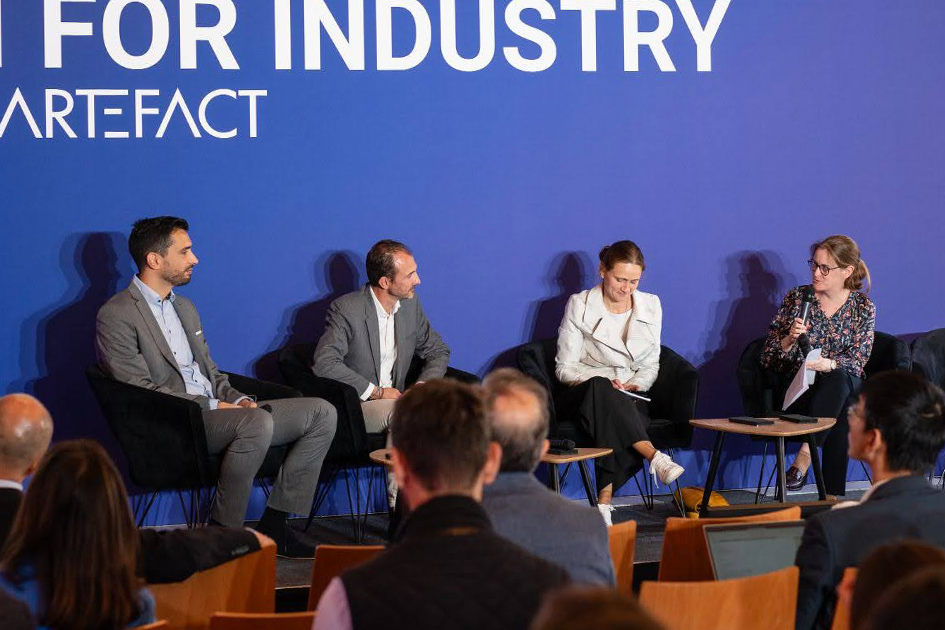AI for Industry Summit by Artefact - September 17th, 2024 - Paris
Key learnings from the panel discussion with Youssef Benzakour, Operations Digital Transformation VP at Forvia, Bérangère Sixta, Group Head of Data at Suez, and David Rodriguez, Head of Data & AI, Central Data & AI Manager at Ariane Group.
Moderated by Florence Benezit, Consulting Director at Artefact.
The panel on IT and OT data convergence, discussed the importance of merging Information Technology (IT) and Operational Technology (OT) for industrial performance. IT includes ERP systems, cloud platforms, and data solutions, while OT encompasses the technologies found on shop floors, such as sensors and controllers. The convergence of these two domains is increasingly seen as a strategic advantage for improving industrial processes, decision-making, and efficiency.
Suez’s perspective on IT-OT convergence
For Suez, which operates in the water and waste management industries, IT-OT convergence plays a crucial role in optimizing real-time processes such as monitoring water pressure or tracking waste treatment systems. Suez has been using OT data to optimize energy consumption and detect leaks more quickly. The challenge now is to share OT data more widely across the organization, from operators to managers, and with external stakeholders, such as public water authorities. The goal is to provide accurate data for better decision-making.
Ariane Group’s approach to convergence
Ariane Group, an European aerospace manufacturer, sees IT-OT convergence as key to increasing productivity and competitiveness in the space sector. Having deployed a Manufacturing Execution System (MES), they are now focused on connecting machinery to collect real-time data in an industrial data zone. This enables the development of use cases like predictive maintenance and predictive quality control. For example, data collected can help stop production lines when product quality diverges from the expected standards, helping to improve overall efficiency and reduce errors.
Forvia’s journey towards convergence
Forvia, an automotive company, is using IT-OT convergence to improve quality, agility, and efficiency in its operations. They have already deployed real-time production monitoring across more than 300 sites, allowing for better control of inventory and operational efficiency. The second phase of their convergence involves deeper connectivity, where detailed machine data is collected and analyzed to optimize production processes. For example, Forvia uses historical data from injection machines to optimize cycles and quality, and AI systems help analyze error codes from machines, providing real-time guidance to operators.
Technical challenges in IT-OT convergence
For Forvia, the main challenge is data modeling, ensuring that data collected across different machines is standardized for scalable use. This includes establishing common terminology for parameters like pressure across the organization. For Suez, data quality is a significant challenge, especially when sharing data with a wide range of users. Ariane Group emphasized the importance of cybersecurity, as IT and OT systems were traditionally segregated for security reasons. Integrating them while ensuring cybersecurity remains a top priority, especially in critical industries like aerospace.
Human challenges in IT-OT convergence
The panelists agreed that cultural differences between IT and OT teams pose significant challenges. IT teams tend to focus on agile development, improving systems continuously, while OT teams prefer stability and minimal changes once systems are operational. Bridging this gap requires empathy and cross-functional collaboration. Forvia’s representative stressed the importance of investing in people, encouraging teams to understand each other’s constraints and work together toward shared goals. Suez is working on small pilot projects to gradually build trust and cooperation between IT and OT teams.

 BLOG
BLOG



